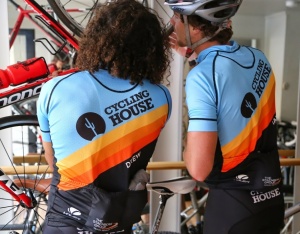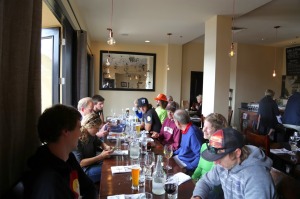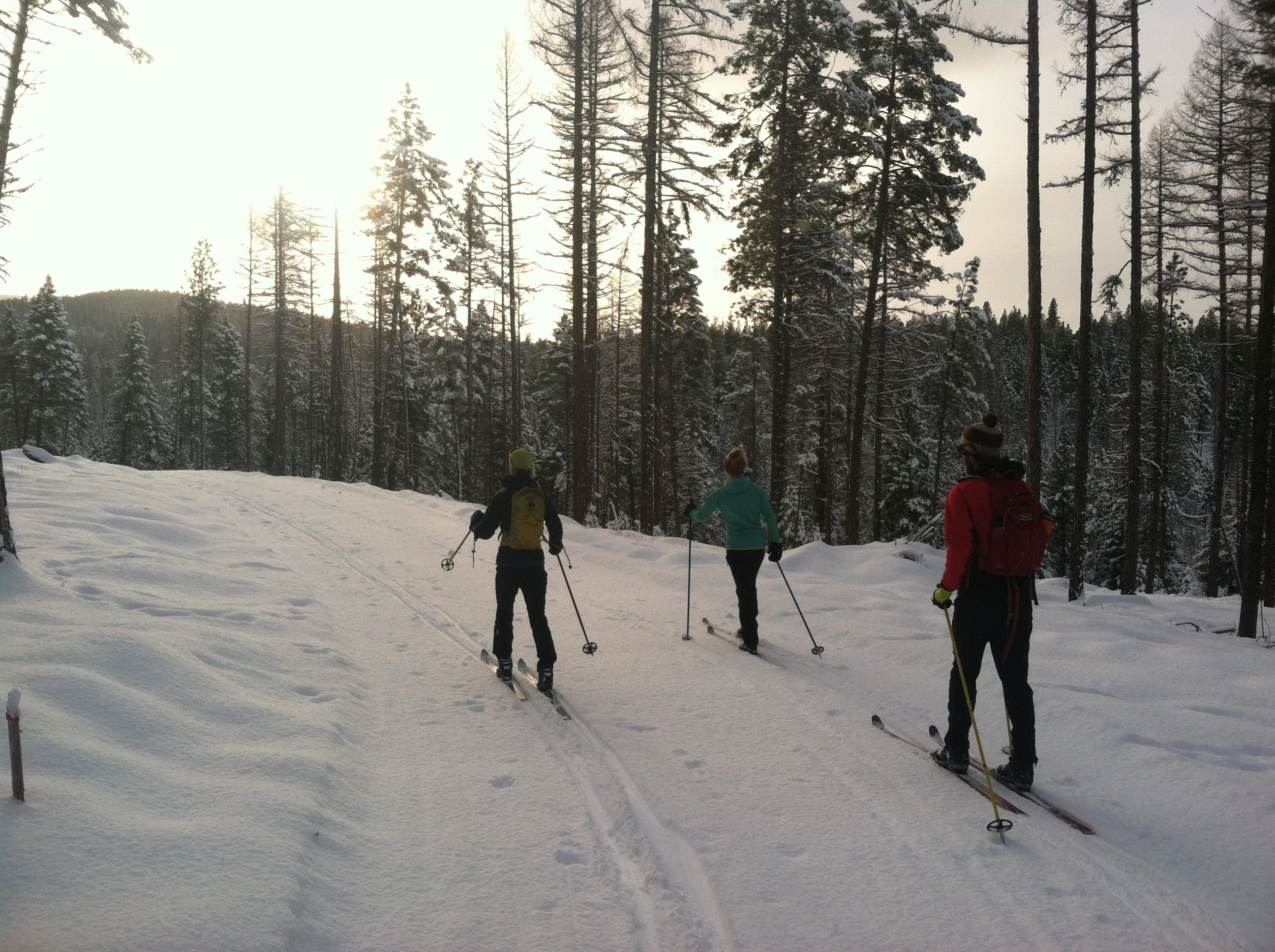Winter is upon us and for most of the country that means road and trail access is limited. For a lot of cyclists, runners, and triathletes, this may mean that training suffers in favor of eggnog and pumpkin pie. But, a dip in training during winter months makes getting ready for that spring race more challenging. So what’s the best way to fight the winter weather? We asked our experts for their secrets for endurance athletes to stay fit in the winter.
Cyclists
When it comes to winter cyclists may have it the worst. Roads are slushy, icy, cindery and can be just plain dangerous. Trails are even worse. Shaun has trained through enough Missoula winters to pick up a few tricks to emerge from winter months strong and fit.
1. Have a plan – Whether it’s a spin class, trainer in the basement, or a bundled up ride outside, it’s important to have a solid plan to spin the pedals. It’s easy to get caught up in other activities in the winter and not spend enough time in the saddle. Shaun recommends three bike sessions a week. Workouts help pass the time, but a focus on pedal stroke and cadence type workout may be more beneficial than fitness building workout for winter training.
2. Skate ski – Really any type of Nordic skiing is great for building fitness, but a solid skate ski session is very beneficial for cyclists. It’s comparable to a spin class, especially if your aren’t a top skier who can glide yards at a time, where a 1.5 hour workout leaves you exhausted. Shaun recommends two skate ski workouts a week in addition to either a skin/ski backcountry adventure, or longer backcountry classic ski session.
3. Running – If trails or sidewalks aren’t too icy, or you have access to a treadmill, running is a great option for cyclists. Running strengthens muscles that cyclists don’t use as frequently. Although it does not help with cycling pop and high end cadence, it is a great way to build cardio fitness and strengthen joints. It is recommended to tone down running volume as you get close to a big cycling event, and don’t string together 6+ mile days without a recovery day or two.

4. Spend some time with your gear – Getting your kits, shoes, and bikes all properly fitting and fine tuned is sometimes neglected in the summer. Winter is a great time to tinker with bike parts and other gear. This provides time to reflect on your last season and get excited for the upcoming one.
5. Focus on you weaknesses – Winter is a great time to build strength in neglected areas in a non-specific manner. If you’ve struggled during sustained climbs, try skate skiing or running for 25-35 minutes at a hard effort. If you struggle responding to quick accelerations, try finding a plyometrics/circuit routine you like to build more fast twitch muscle.
Runners
Typical runners are creatures of habit. If their favorite loop becomes too icy, or early morning runs are too dark, it becomes easy to skip running all together. Forrest has found a few ways to keep training exciting enough to continue through the winter.
6. Snowshoes – Running snowshoes open up a whole new world to running in the winter. A good pair of running snowshoes will allow you to stay on trail all winter long. While you may need to rethink “speed” snowshoeing is one of the best ways to burn calories, and will keep your heart rate in the red zone the entire run. Snowshoeing also helps maintain the muscle memory of running while providing more resistance from powder and the extra weight, which helps increase eccentric strength.
7. Cross Country Ski – Arguably the greatest cardio workout in the world, cross country skiing is a great way to stay fit in the winter. Classic skiing works best for runners as far as muscle training goes, and opens up the entire back country. Getting on skis during the winter also allows joints to recover from the other nine months of pounding the dirt.
8. Treadmill – The treadmill often gets a bad name for runners but it is a great winter training tool, especially for those ever so important speed workouts. It’s almost impossible to get the speed through snowshoeing and skiing, and in the cold in general, making the treadmill in a nice, warm gym a winter necessity. One of Forrest’s go-to treadmill workouts to maximize the functions and speed session is a short fartlek/hill circuit.
Warmup 10 minutes
4×30 second sprints on flat treadmill with 1 minute walking recovery in between
4×30 second sprints at 15% grade, 1 minute walking recovery in between
Repeat
Cooldown 10 minutes
9. Core Training – Winter is a great time to focus on developing other areas of your running game. Strength workouts are easy to neglect during the rest of the year when the trails are so inviting, but are important to long term success. Here’s one of Forrest’s favorite core specific workouts that doesn’t require any gym equipment:
1 min plank
15 oblique v-ups
1 min plank with shoulder taps
15 reverse sit-ups
30 second side plank
25 crunches
1 min plank with alternating knee drives
20 pushups
10. Aquajog – Like cross country skiing, the pool is a great place to get a workout and avoid joint impact. By staying in the deep end and simulating a running motion (focus on staying straight up and down), you can get a solid workout in a pleasant atmosphere. The pool can get boring though so we recommend diving in with a workout in hand.
Warmup 10 minutes
4x(30 seconds, 1 minute, 90 seconds, 2 minutes) with 30 seconds easy aquajogging in between each interval, and 60 seconds easy in between each set
Cooldown 10 minutes

Triathletes
Winter can be especially hard for triathletes who are used to training in various disciplines throughout the week. Monotony can develop quickly. Brendan and Ian, our two resident pro triathletes share their favorite tricks to keep moving and stay fit in the winter.
11. Find a buddy – Ian has found that linking up with another endurance junkie in during the winter months helps hold him accountable. It’s very easy to sit by a warm fire and snuggle up with a batch of warm cookies, but having a reliable training partner can help give you an edge over the food coma.
12. Brendan likes to take the winter to focus on his technique. During warmer months triathletes tend to spend a lot of time putting in volume, that technique can sometimes suffer. Spend January working on that swim stroke so you can be faster when it counts. On the trainer incorporate some high cadence, single leg drills, or focused time in the aero position.
13. Strength Train – Winter is a great time to hit the weights. Of course, you can add in the core work for runners, but take time to focus on swim specific shoulder lifts, and exercises to get more power from you legs on the bike. Ian’s go to exercises, when he can’t make it to the gym, are diamond push-ups, one legged squats, and leg lifts. Add in lunges, burpees, and pull-ups and you got a great start to a living room workout plan.
14. Go have a drink with friends – By nature, successful triathletes are serious and focused when it comes to training. Winter can be a great time to back off a little and have some fun. Like Ian warns, this does not mean to go tear down the town five nights a week, but taking a little me-time during the off season will help keep you fresh for the year of training.
15. Establish a winter goal – This is important for any athlete looking to stay fit in the winter. But for triathletes this is critical. Triathletes are competitive and there are not many races during the winter to gauge fitness, so your goals may need to be more training focused. Try setting an hour goal for the week for each discipline. Seeing your training in writing will give you something to focus on until it’s time to race.
But don’t forget… to take some time to recover. Your body performs best when you’re well rested and well fed. Even Eddy Merckx used his off season as an opportunity to eat cake and smoke cigarettes.
